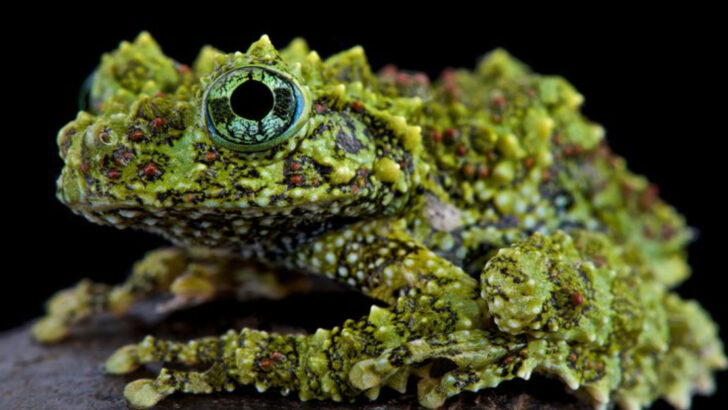Some frogs look like they crawled straight out of a fever dream.
Glass skin, glowing eyes, electric colors, spiky noses—these aren’t cartoon characters. They’re real animals hopping through rainforests and swamps right now.
Frogs are masters of the bizarre. One might look like moss, another like it’s carved from jade. Some are see-through, others flash warning colors that scream, “Touch me and regret it.”
These 12 frogs are nature’s wildest experiments—proof that the planet’s strangest artists aren’t human at all.
Glass Frog
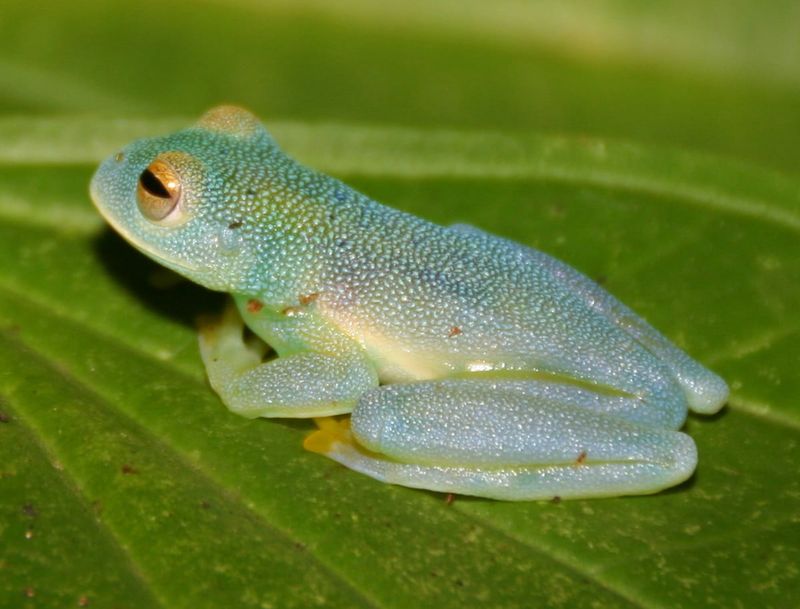
Imagine seeing right through a creature. The glass frog’s astonishingly clear skin reveals its internal organs, making it a living biology lesson. Found in the lush rainforests of Central and South America, these little frogs are masters of camouflage.
Their unique transparency helps them blend seamlessly with their leafy surroundings. Despite their delicate appearance, glass frogs are robust hunters.
They primarily feast on insects under the cover of night. Their ability to hide in plain sight is a testament to nature’s ingenuity and adaptation.
Wallace’s Flying Frog
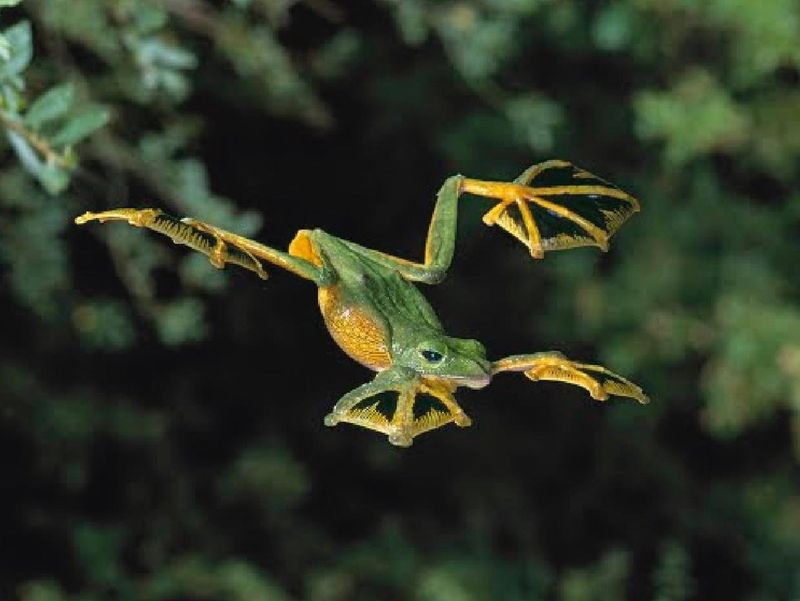
Gliding through the air like a leaf caught in the breeze, Wallace’s flying frog defies gravity. Native to the dense forests of Southeast Asia, this frog uses its webbed feet as parachutes.
By leaping from tree to tree, it escapes predators and searches for food. This adaptation is not only a survival technique but also a marvel of nature. The frog’s vibrant green color helps it stay hidden among the leaves.
Its ability to soar between trees shows evolution’s creative solutions to life’s challenges.
Surinam Toad

The Surinam toad is a creature straight out of a science fiction tale. Its flattened body and mottled brown skin make it resemble a leaf floating on water. Found in the murky waters of the Amazon basin, it has a bizarre breeding method.
Females carry fertilized eggs on their backs until they hatch. This unique reproductive strategy ensures the young are protected from predators.
The Surinam toad’s strange appearance and lifecycle make it one of nature’s true oddities.
Purple Frog
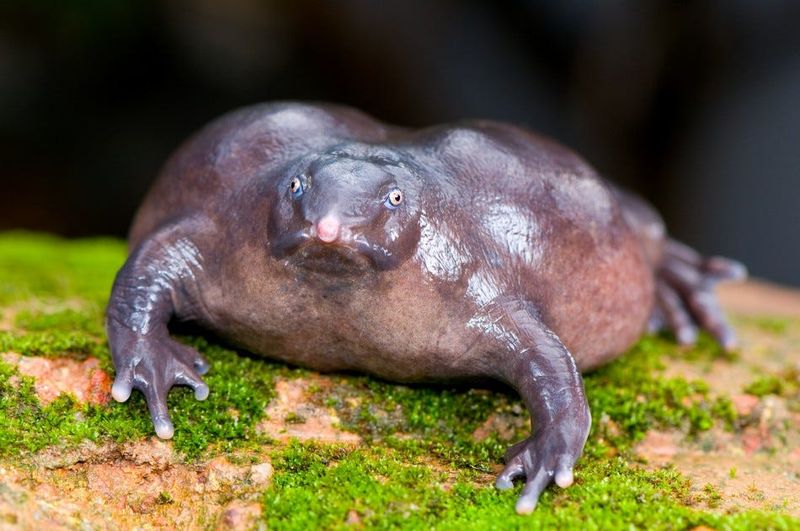
Burrowing deep into the earth, the purple frog spends most of its life hidden from sight. Found in the Western Ghats of India, this frog emerges only briefly during the monsoon season to breed.
Its bloated body and pointed snout give it an alien-like appearance. Despite its odd looks, the purple frog is a crucial part of its ecosystem, controlling insect populations.
Its subterranean lifestyle and unique features highlight the diversity and adaptability of amphibians.
Golden Poison Dart Frog
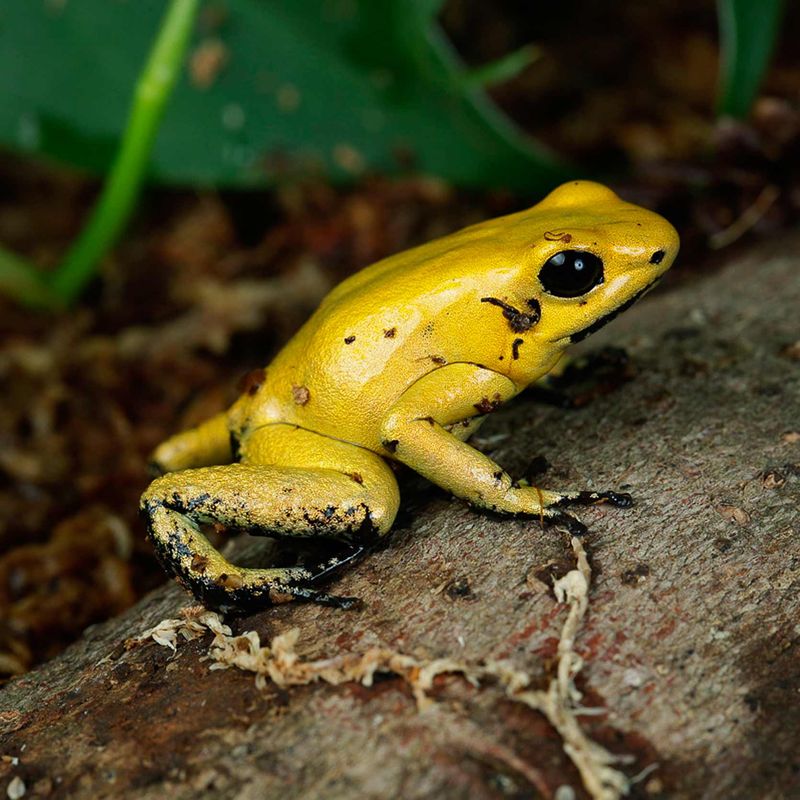
Drenched in a brilliant shade of yellow, the golden poison dart frog is as beautiful as it is deadly. Native to Colombia’s rainforests, this tiny amphibian carries enough toxin to deter even the most daring predators.
Despite its lethal nature, it plays a vital role in the ecosystem by controlling insect populations. Curiously, its poison is derived from its diet of ants and termites.
This tiny frog is a striking example of nature’s balance between beauty and danger.
Budgett’s Frog
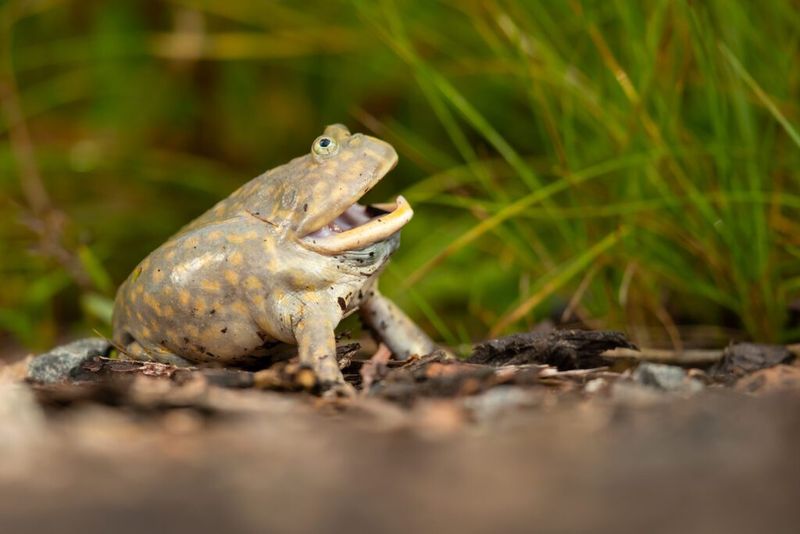
With a face only a mother could love, Budgett’s frog is known for its comically wide mouth. Found in the marshy regions of Paraguay and Argentina, it has a rather unorthodox appearance.
Its flattened body and large, bulging eyes give it a perpetual grumpy expression. This unusual look is perfectly suited for its hunting style, which involves ambushing prey.
Budgett’s frog is a reminder that nature often has a sense of humor.
Titicaca Water Frog

In the deep, pristine waters of Lake Titicaca, the Titicaca Water Frog reigns supreme. Known for its incredibly loose and baggy skin, this frog uses its extra skin folds to absorb more oxygen while submerged.
Underwater, these frogs can appear almost alien-like with their large, droopy skin. Found only in this high-altitude lake, they face the constant challenge of low oxygen levels.
To combat this, their skin acts like a natural diving suit, allowing them to breathe efficiently. Sadly, they are endangered due to pollution and over-harvesting.
Red-Eyed Tree Frog

With its bright red eyes and vivid green body, the red-eyed tree frog is a master of surprise. Native to Central American rainforests, this frog uses its startling appearance to startle predators.
By closing its eyes and tucking in its limbs, it blends effortlessly with the foliage. When threatened, it opens its eyes abruptly, momentarily shocking predators.
The red-eyed tree frog’s bold strategy is a testament to the power of surprise in the animal kingdom.
Amazon Milk Frog
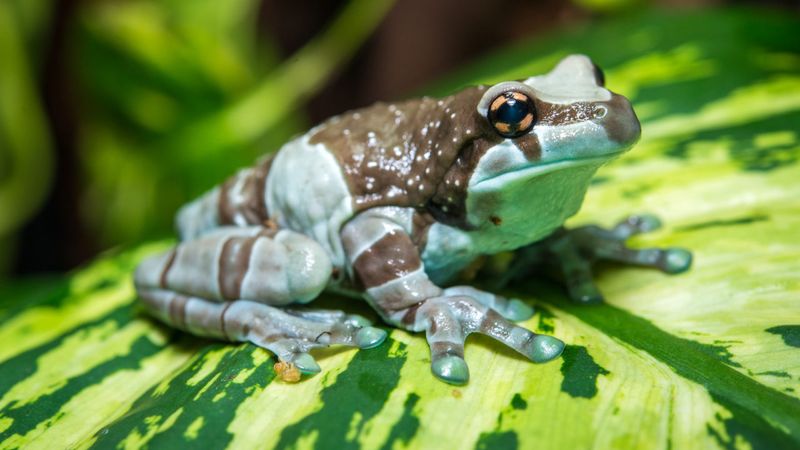
The Amazon milk frog is a striking creature with its sky-blue and chocolate-banded skin. Found in the Amazon rainforest, this frog’s name comes from the milky fluid it secretes when threatened.
This substance acts as a deterrent to predators. Its large size and striking coloring make it a standout among tree dwellers.
Despite its bold appearance, the Amazon milk frog is a peaceful creature, spending most of its time high in the treetops.
Vietnamese Mossy Frog
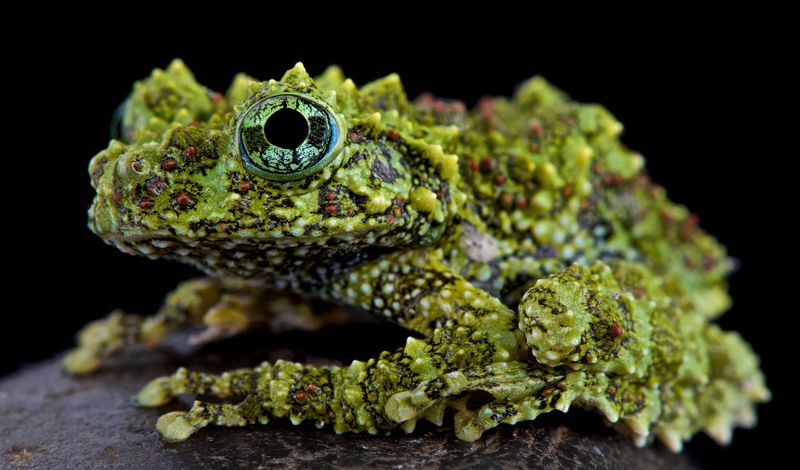
Camouflage reaches new heights with the Vietnamese mossy frog. Its bumpy, moss-like skin allows it to vanish among rocks and vegetation. Found in the forests of Vietnam, this frog’s appearance is a perfect example of adaptation.
By mimicking its surroundings, it avoids predators with ease. Its ability to blend in so completely makes it a master of disguise in the animal kingdom.
Blue Poison Dart Frog
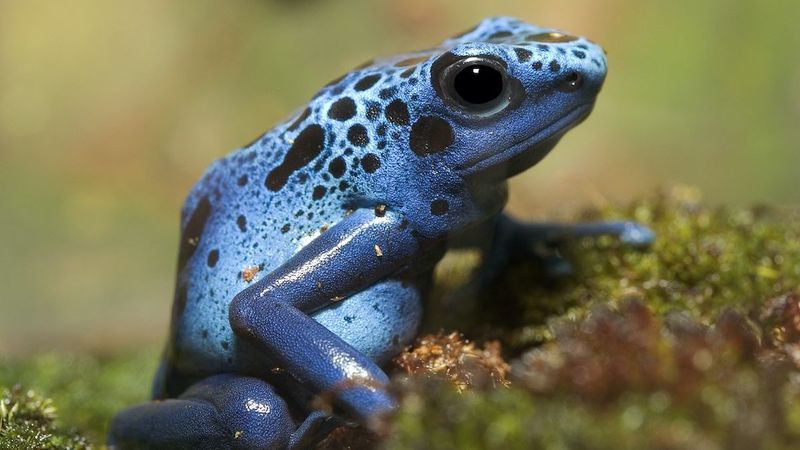
The blue poison dart frog is both stunning and dangerous. Its bright blue skin, dotted with black spots, serves as a warning to potential threats.
Found in the rainforests of Suriname, this frog’s poison is potent enough to deter most predators. This vibrant amphibian is a reminder of nature’s ability to pair beauty with danger in an extraordinary way.
Despite its toxicity, it plays a crucial role in its habitat by controlling insect populations.
Goliath Frog
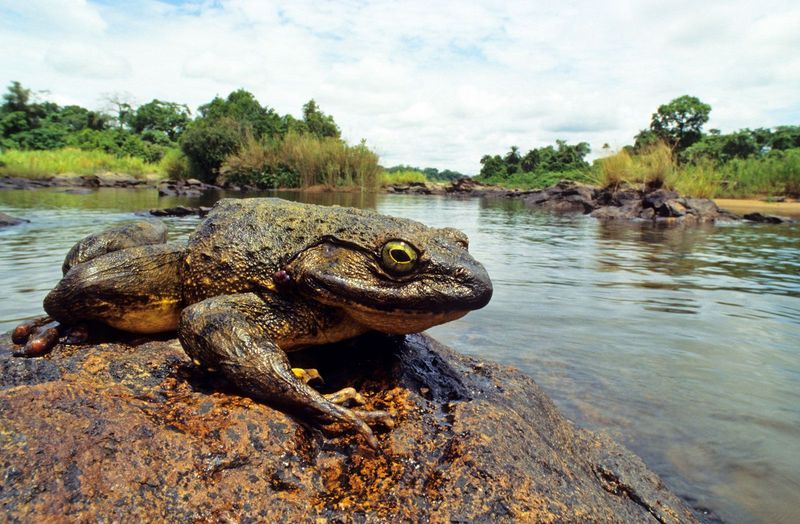
The goliath frog is a true giant of the amphibian world. Native to the rivers and waterfalls of Cameroon, it holds the title of the world’s largest frog. Despite its size, it is surprisingly agile, leaping great distances in search of food.
Its impressive size is matched by its significant ecological role, contributing to the balance of its ecosystem. This giant reminds us of the incredible diversity and adaptability of amphibians.

